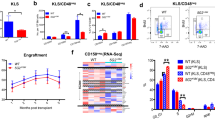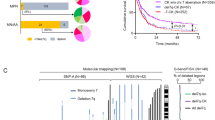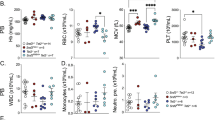Abstract
We intend to use a gene complementation approach to clone a tumor suppressor gene on mouse chromosome 2, the loss of which contributes to myeloid leukemia. An in vitro model system has been generated using a clonal cell line, in which tumorigenic chromosomal lesions have been selected along with myeloid differentiation. Among these lesions are deletions of chromosome 2. Comparison of subclones with deleted vs intact chromosomes 2 has allowed the identification of a growth related phenotypic pattern which correlates with the deletion, viz the retention of a marker of immature cells, resistance to inhibition by lipopolysaccharide (LPS), even in the presence of markers of mature myeloid cells, such as resistance to killing by apoptosis-inducing agents. The phenotype is shared by chromosome 2-deleted cell lines derived from conventional tumors. We have begun to investigate the mechanism of the phenotype. The LPS resistance does not correlate with lack of mRNA for CD14, a known cell surface receptor for this agent, or with failure to induce TNFα or nitric oxide synthase in response to its binding. The system should allow cloning of the gene using complementation of this phenotype in transfected cell lines.
This is a preview of subscription content, access via your institution
Access options
Subscribe to this journal
Receive 12 print issues and online access
$259.00 per year
only $21.58 per issue
Buy this article
- Purchase on SpringerLink
- Instant access to full article PDF
Prices may be subject to local taxes which are calculated during checkout
Similar content being viewed by others
Author information
Authors and Affiliations
Rights and permissions
About this article
Cite this article
Cook, W., Alexander, B. Phenotypic effect correlating with loss of a novel tumor suppressor gene: towards cloning by complementation. Leukemia 12, 1937–1943 (1998). https://doi.org/10.1038/sj.leu.2401212
Received:
Accepted:
Published:
Issue date:
DOI: https://doi.org/10.1038/sj.leu.2401212



